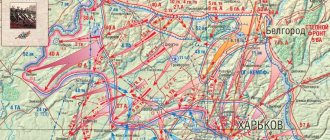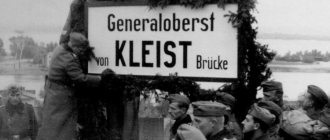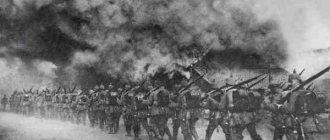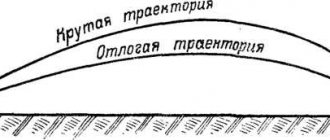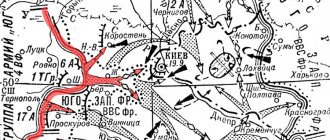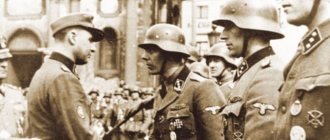Naroch operation
100 years ago, in March 1916, the Naroch operation began - the offensive of Russian troops in the north-west of Belarus.
The operation was named after the largest lake in the region - Naroch, although military operations took place both to the south and north of this lake. On March 3 (16), the Chief of Staff of the Supreme Commander-in-Chief, General Mikhail Alekseev, issued a directive to begin the offensive of Russian troops in the area of Lake Naroch. His main goal was to divert part of the German forces from the Western Front in order to help the French troops defending with their last strength near Verdun. In the conditions of a powerful German offensive near Verdun, the French commander-in-chief Joseph Joffre turned to the Russian leadership with a request to deliver a diversionary blow to the enemy. His telegram dated March 2 said: “In anticipation of the development, now quite probable, of German operations on our front and on the basis of the decisions of the meeting in Chantilly, I ask that the Russian army immediately begin preparing the offensive envisaged by this meeting.”
On March 5 (March 18), Russian troops began artillery preparation and two days later went on the offensive. In a few days they advanced up to 10 kilometers south of Lake Naroch. As a result, the German command was forced to commit reserves into battle, which were initially supposed to be transferred to the Western Front to continue the offensive towards Verdun. The advance of the Russian troops was stopped, but the strategic goal of the operation was achieved. As the French commander-in-chief, General Joffre, noted, “the last Russian offensive forced the Germans, who had only insignificant general reserves, to bring all of them into action and, in addition, to attract stage troops and transfer entire divisions withdrawn from other sectors.”
General situation
At the end of 1915, bloodless, exhausted by heavy fighting, lack of weapons and ammunition, retreat and loss of fortified lines, the Russian army occupied the front from the Baltic to the Romanian border. The Northern Front (12th, 5th and 1st armies) marched from the sea along the Dvina, having bridgeheads on the left bank in the Riga region, near Jacobstadt and against Dvinsk. Then the front turned south, into the lake region of Eastern Lithuania, where at the latitude Sventsyan merged with the Western Front.
The Western Front ran through Minsk Polesie from Naroch to Pripyat. The 2nd Army was located in the Sventsyansky direction, the 4th Army in the Smorgonsky direction, the 10th Army in the Krevsky direction, and the 3rd Army in the Baranovichi direction. The Southwestern Front stretched from Pripyat to Romania. The 8th Army was located in Volyn Polesie, in the Kovel direction, the 11th Army - in Eastern Galicia, the 7th and 9th - in the Dniester-Prut region.
It is worth noting that compared to the campaign of 1914-1915. The initial position of the Russian troops worsened. Our most important railway lines were cut by the enemy, the main railway junctions were lost, and Russian troops were driven into a roadless area. The entire network of strategic railways, which was created with such difficulty in the pre-war period, was lost. To transport troops, it was necessary to use the weaker “economic network” of internal Russia and the Moscow railway junction, which was weaker and unadapted to such loads. As a result, the roads were overloaded and occupied for military needs, which worsened the overall economic situation of the Russian Empire. In addition, this worsened the strategic maneuver capabilities of the Russian army; our troops became less mobile.
There were 137 infantry and 35 cavalry divisions on the Russian Front. After heavy fighting in 1915, they numbered only about a third of the staff. In the winter, the troops were replenished: the 1916 term joined, and by the spring - the 1917 term. The army's combat capability was restored. During the year, they also had to call up the 1918 term, senior militia terms, etc. The problem was that the entire mass of those called up had nothing to arm and, most importantly, no one to train. The replacements were completely unfit for combat after 6 weeks of “training”, or rather “staying on allowance” in reserve regiments and battalions. The situation was made easier by the fact that in conditions of trench warfare, it was possible to train recruits in the immediate rear of the units themselves in supernumerary training battalions and teams.
It is worth noting that Headquarters has not issued a single instruction over the past period, without having worked through the rich experience of the campaigns of 1914 and 1915. The troops were left to their own devices and developed their own training and fighting skills, for which they paid a heavy price. The practical experience was rich. As military historian A. A. Kersnovsky notes: “... the winter training of our troops in 1915-1916 should be considered excellent.” That is, the pause in hostilities on the front line was used well: the troops recovered and were well prepared. True, the high command was unable to fully use the power of the Russian army during the 1916 campaign.
The “shell famine” was eliminated. The re-equipment of state-owned factories and the increase in their number from 20 to 40 tripled the production standards for shells by the spring of 1916. Under the leadership of academician artillerymen, our state-owned factories did a great job, satisfying up to 70% of the needs of our army. Another 18% of the army's needs were met by private enterprises of the Military Industrial Committee and the Zemstvo-City Union. At the same time, private traders speculated, profiting from the war - their rates were 1.5-2 times higher than those of state-owned factories. In addition, these organizations, on which the liberal opposition relied, controlled almost the entire press and were able to convince the public that they were working for the “good of the Motherland,” while the government was only putting spokes in the wheels. It is also worth noting that in these organizations, tens of thousands of young, healthy and educated people “dug in” deep in the rear, from whom it was possible to form a dozen divisions.
The rest of the army's needs were met by orders from abroad. True, there were major problems here too, largely related to the fact that before the war, industrialization was not a priority of the state. Foreign orders absorbed billions of rubles in gold. At the same time, the results did not justify the hope that “abroad will help us.” England and France served primarily their armies, and the industry of neutral countries could not quickly rebuild. The problem of communications also affected: the Black Sea was blocked, as was the Baltic; The White Sea froze for 5-6 months of the year, there was only a single-track line from Arkhangelsk; Vladivostok was far away, transporting goods took a lot of time and the costs were very high (the mileage of one train from Vladivostok to Dvinsk required the maintenance of 120 locomotives!).
With Russian gold, England and the USA were able to calmly mobilize their huge industry. At the same time, the Russian army never saw thousands of guns and tens of thousands of machine guns, for which the money was paid in full in advance. These weapons then helped the Entente win the 1918 campaign.
The problem of “rifle hunger” was never completely solved. The consumption of rifles in 1915 exceeded all expectations. During the retreat, the weapons of the killed and wounded remained on the battlefield, while the weapons of the prisoners went to the enemy. Many rifles were abandoned by deserters and fugitives. Some of the weapons were lost due to poor care. At the beginning of the war, damaged weapons were easily thrown away; the soldiers believed that the rifle was a government item and they would easily be given a new one. Industry developed slowly and could only cover a third of the costs. In 1914, each of the 4.6 million soldiers (career and reserve) had a rifle, but all supplies were depleted. In the future, we had to wait for the factories to be re-equipped and hope to purchase rifles abroad.
From August 1914 to December 1915, 6 million 290 thousand people were drafted. They had 1 million 547 thousand rifles, that is, one rifle for four people. The masses of unarmed reinforcements who arrived at the front in 1915 only reduced the combat effectiveness of the army, increasing its losses and the number of prisoners. In the fall of 1915, in the rear and registration units there was one rifle for every 10 people, and at the front - for two. The situation was especially bad on the Northern and Western fronts, which suffered the most serious losses during the retreat and lost their arsenals of fortresses. For example, in the 9th Army Corps of the 3rd Army, rifles were only in the forward battalions of the regiments. In January 1916, in the armies of the Western Front, more than a third of all soldiers were without rifles.
The big problem was the difference between the systems of shotguns and carbines. In the second year of the war, the Russian army had 35 different systems of rifles and carbines. The regiments were armed with 2-4 different models. In addition, in parts of the Northern and Western Fronts there was an extreme shortage of machine guns.
Things were very bad with aviation. Russia in this component was entirely dependent on foreign countries. The Allies sent what was left after supplying their units - mostly rubbish. Our pilots called such planes “drugs.” The heroism and ingenuity of a Russian pilot was needed not only to fly these machines, but also to support the army.
Source of maps: Podorozhny N. E. Naroch operation in March 1916
Plans. Strengths of the parties
The main reason for the premature Russian offensive was Allied pressure. On February 1, 1916, an allied military council was held in Chantilly, in the French Headquarters. It was decided to launch a general offensive on the Eastern Front on June 2 (15), delivering the main blow to Vilna, and on the Western Front on June 18 (July 1), delivering the main blow to the Somme. However, this plan did not take into account the “wishes” of the Germans. Already on February 8 (21), German corps rushed to Verdun. As a result, the Allied campaign plan for 1916 was buried within a week of its adoption.
After the start of the German offensive near Verdun, the commander-in-chief of the French army, Joffre, turned to the Russian command with a request to deliver a diversionary blow to the Germans. The Russian Headquarters, meeting the request of its ally, decided to conduct an offensive operation on the northern wing of the Russian Front in March before the start of the general offensive of the Entente armies.
On February 24, a meeting on operational issues was held at Headquarters and a plan for a combined strike was adopted. On the Northern Front, the 1st and 5th Armies swapped places, the 5th Army was ordered to advance from Jacobstadt to Ponevezh, and the 1st Army supported the Western Front with its left flank. The 12th Army could not actively take part in the offensive, since it had not yet completed rearmament (the troops accepted rifles purchased from the Japanese).
On the Western Front, the main role was to be played by the right-flank 2nd Army under the command of General Alexander Ragoza. The 2nd Army was supposed to strike at Święciany-Vilna. The composition of the army was increased to 10 corps. General Ragosa, who had just received troops from General Smirnov, divided the unfamiliar troops into three parts. As a result, he brought confusion to the troops and reduced the striking power of the army. On the right flank, a group of General Pleshkov was created (1st Siberian Corps, 1st and 27th Army Corps), in the center - a group of Sirelius (4th Siberian Corps and 34th Army Corps), on the left flank - a group Balueva (3rd Siberian Corps, 5th and 35th Army Corps). The 3rd Caucasian Corps, 15th and 36th Army Corps remained in reserve.
Commander of the 2nd Army Alexander Frantsevich Ragoza
Thus, our troops had to attack three months before the deadline; throw into battle still untrained, unprepared troops who had a shortage of weapons, including rifles, and shoot up the supply of ammunition that they had just begun to accumulate (this led to a catastrophic shortage of artillery shells); to advance in lake-swampy areas, in the spring thaw, when infantry and artillery were drowning in the mud. Thus, the situation was complicated by extremely difficult weather conditions: strong thaws alternated with night frosts, wet snow with rain, which turned the swampy lake region in which the troops were to operate into an almost impassable area. As a result, defeat was predetermined even before the attack began.
Our troops were opposed by the German 10th Army of General Hermann von Eichhorn: 31st, 42nd and 115th Infantry, 75th Reserve, 10th Landwehr Divisions, 3rd, 9th and Bavarian Cavalry Divisions, 9 - I'm a landwehr brigade. In addition, the 86th and 119th infantry divisions, the 80th reserve division, and the 170th brigade were in reserve.
Battle
On March 5 (18), the Russian offensive began, which became a real ten-day battle. Corps after corps stormed German fortifications and burned in the fire of German artillery. Our too few in number, weak in caliber, lack of shells, and even poorly grouped artillery, turned out to be powerless against the enemy’s fortifications. The Germans even had concrete fortifications here. Our soldiers hung on barbed wire, died under fire and got stuck in impassable mud.
The courage of the soldiers could not correct the situation. The regiments of Pleshkov and Sirelius were shot at the wire and on the wire. The 1st Siberian Corps, at the cost of huge losses, broke through the powerful positions of the 21st German Corps, but it was not supported and our troops drowned in blood. Only Baluev’s group had minor success, where the 5th Corps knocked the enemy out of Postavy and penetrated several kilometers into the enemy’s defenses.
The massacre continued on March 15 (28), when Headquarters ordered the operation to be stopped. Only on March 17 (30), the commander of the Western Front, A.E. Evert, issued an order according to which “the 1st and 2nd armies should stop the offensive, firmly establish themselves in their position... and continue the operation they had started in the area between lakes Naroch and Vishnevskoye.” However, there was no continuation: the fighting on Naroch stopped along the entire front due to the extreme exhaustion of the troops, huge losses and severe weather conditions.
Our troops suffered huge losses. The 16 Russian divisions of the 2nd Army advancing near Naroch lost 90 thousand people, including 20 thousand killed and 5 thousand missing. German losses ranged from 20 to 40 thousand people.
On the Northern Front, the troops of General Kuropatkin (he replaced the sick Plehve) launched a series of ineffective offensives from March 8 (21). The attacks of the 12th, 1st and 5th armies were unsuccessful. The Russian corps suffered heavy losses: the front lost 60 thousand people.
Results
The results of the operation for the Russian army were disastrous. During the Naroch operation, Russian troops captured 1200-1800 prisoners, 15 machine guns, several hundred rifles, and liberated 10 square kilometers of Belarusian territory. On March 8 (21), the city of Postavy was liberated (recaptured by the Germans on April 15, 1916). At the same time, German troops launched a counterattack in another area and occupied 70 square kilometers, which they left behind. And this with very heavy losses, when our troops literally drowned in blood trying to break through the powerful, deeply echeloned line of German defense. Losses in the Naroch operation, even by the standards of the First World War, where bloody battles were not uncommon, were very significant. The main reason for the defeat was the numerous mistakes the Russian command made during the planning and execution of the operation.
However, our army helped France. The German command did not transfer a single German battalion from the Eastern Front to Verdun. The advance of the Russian Western Front forced the German high command, who decided that the Russians had launched a general offensive and were about to break through the German defenses, to stop attacks on Verdun for two weeks. Thus, the German command miscalculated the expected weakening of the combat capability of the Russian army after the defeats of 1915, underestimated the Russian army and did not dare to reduce their troops on the Russian front in order to transfer some of them to the French theater. Moreover, the Germans discovered the danger of their position in this direction and were forced to further strengthen their troops here by transferring their units here from the Austro-Hungarian sector of the front. The German command also transferred to the East part of the troops from the Western Front, which they had previously intended to use against Verdun.
Losses
“German sources (Reichsarchiv vol. 10, pp. 428-432) hide their losses. Estimating, for example, the losses of Pleshkov’s group in the offensive on March 18 at 4,000 people, the Germans estimate their losses at only 200 people. This is clearly absurd, because March 18 was the most significant day for both sides in terms of losses. If this day is determined by the losses of the Germans at 200 people on their left flank and approximately the same figure on the right, then, generally speaking, during the entire operation the Germans should have lost (400-500 x 10) from 4,000 to 5,000 people, between However, their sources indicate a total loss figure for the entire operation of 20,000 people.
They estimate Russian losses for the entire operation at 110,000, while an accurate calculation gives the figure 78,000. Analysis of the two figures indicated (20,000 and 110,000), one obviously underestimated, and the other equally exaggerated, gives reason to believe that German losses could reach the figure of 30,000 - 40,000 people, hence the concentration of German reserves on this section of the front,” notes Podorozhny[2].
The most accurate figures for Russian losses are 1,018 officers and 77,427 lower ranks killed and wounded (of which 12 thousand were frostbitten and frozen). A. A. Kersnovsky estimates the Russian losses of Naroch at 20 thousand killed, 65 thousand wounded and 5 thousand missing.
The losses in the Naroch operation were very significant by the standards of the First World War. Thus, during the entire June offensive of 1917 on all fronts, the Russian army lost 58,329 officers and soldiers killed, wounded and prisoners, and during the entire Caucasian campaign of 1914-17. - 22 thousand killed and 71 thousand wounded.
The losses of the German side were also great. At the beginning of the twentieth century. for the defending side, losses of 1:4 were considered the norm, that is, in theory, the Germans should have lost about 20 thousand people, while in reality their losses amounted, according to various estimates, from 30 to 40 thousand.
Literature
- Battle of Naroch, 1916. German sources about the Russian spring offensive. (Naroch operation): memorial / [ed. text, comp. V.A. Bogdanov]. - Brest: Printing, 2016. - 376 p. — ISBN 978-985-7099-21-4.
- Bondarenko V.V. Lost victories of the Russian Empire / V.V. Bondarenko. - Minsk: Harvest, 2010. - 448 p.: 16 p. on — ISBN 978-985-16-8695-3.
- World history of wars / author-comp. Mernikov A.G., Spektor A.A. - Minsk: Harvest, 2007. - 768 p.: ill. — ISBN 978-985-16-1322-5.
- Dzhunkovsky V.F. Memoirs (1915-1917). T. 3. - M.: Publishing house named after. Sabashnikov, 2015. - 728 p., ill. — ISBN: 978-5-8242-0143-7.
- STRATEGIC ESSAY OF THE WAR 1914-1918. Part V. The period from October 1915. to September 1916 Positional war and the breakthrough of the Austrians by the Southwestern Front / compiled by V.N. KLEMBOVSKY. – M., 1920.
- Shambarov V. E. For Faith, Tsar and Fatherland / V. E. Shambarov. - M.: Algorithm, 2003. - 655 p. — (History of Russia. Modern view). — ISBN 5-9265-0091-5.
- The offensive of the Southwestern Front in May-June 1916. Collection of documents. - M., 1940.
Links
1915 Carpathian Operation • August Operation • Prasnysh Operation • Siege of Przemysl • Battle of Ypres • Dardanelles Operation • Gorlitsky Breakthrough • Great Retreat of 1915 • Sventsyany Breakthrough • Opening of the Thessaloniki Front • Italian Campaign • Albanian Golgotha • 1916 Battle of Erzurum • Battle of Verdun • Naroch Operation • Brusilov Breakthrough • Battle of the Somme • Battle of Jutland • Romanian Campaign • Mesopotamian Campaign • Arab Revolt 1917 Nivelle's Offensive • June Offensive • Battle of Passchendaele • Battle of Moonsund • Battle of Caporetto • Battle of Cambrai • Palestine Campaign • 1918 Treaty of Brest-Litovsk • Spring Offensive • 2nd Battle of the Marne • Hundred Days Offensive • Battle of Vittorio Veneto • Meuse-Argonne Offensive • German Surrender
Memory
On January 21, 1917, based on the order of the chief of staff of VG No. 138, a new regiment of the Russian Imperial Army was formed - the 603rd Infantry Narochsky, which was part of the 151st Infantry Division of the fourth line. It received the name “Narochsky” on March 14, 1917.
Currently, an exhibition in the Postavy Museum of History and Local Lore is dedicated to the Battle of Naroch. Local enthusiasts have restored many military graves from the First World War.
In honor of the 100th anniversary of the Battle of Naroch in Minsk, Postavy and the village. An international scientific conference was held in earnest.
